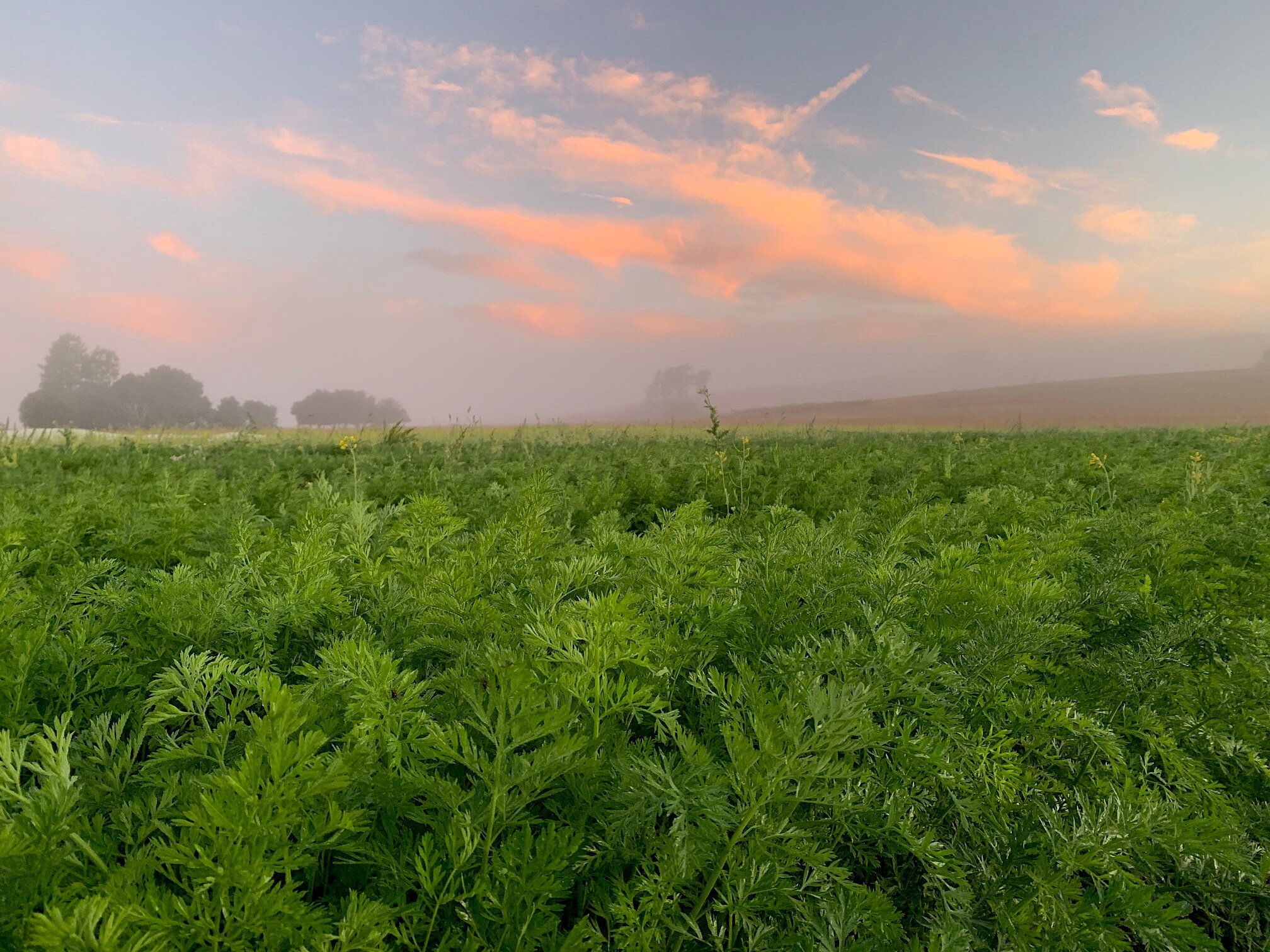We have been feeding hay to the cows on pasture since the rains began to allow the new grass time to grow and to provide extra nutrition to the cows. Since it is a two person job, Teddy and I have helped Seth on Sundays when he does chores. It is a treat for us to be up close and in the herd, watching them interact and see how the calves have grown. There are lines of hay all through the big pasture now which will also feed the soil and drop extra seed.
It was Annie’s last day on Friday, a sad but also celebratory moment as she has been a part of the farm for three years. We will miss the care she brought to the vegetables and us but we are excited to follow her on her next journey at Filigreen Farm.
No potluck this Friday as it will be too wet and rainy. We will resume potlucks in March!
We are closed next week!
This week’s pick list:
Broccoli
Cabbage
Winter squash
Fennel
Kale
Beets
Chard
Potatoes
Parsley
Carrots
Lettuce
Escarole, Sugarloaf, and Radicchio
Radish
Turnips
Rutabaga
Kohlrabi
Celeriac
Celery
Onions
Brussel sprouts
Parsnips
Cauliflower
Pac Choy
Dried tea herbs
Dried ground peppers
Revolution Bread
Momofuko’s Roasted Brussel Sprouts with Fish Sauce Vinaigerette, from food52.com
Roasted Brussels Sprouts
2 tablespoons very thinly sliced cilantro stems, plus 1/2 cup leaves
3 tablespoons chopped mint
2 pounds brussels sprouts (smaller ones are better)
2 tablespoons grapeseed or other neutral oil (or 3 cups if frying instead of roasting)
Fish Sauce Vinaigrette
1/2 cup fish sauce (adjust to taste -- some fish sauce brands are saltier)
1/4 cup water
2 tablespoons rice wine vinegar
2 tablespoons lime juice (from 1 lime)
1/4 cup sugar or maple syrup
1 garlic clove, minced
2 red bird’s-eye chiles, thinly sliced, seeds intact, or chile powder added to your spiciness level
Roasted Brussels Sprouts
Combine the vinaigrette (below), cilantro stems, and mint in a bowl, and set aside.
Peel away any loose or discolored outer leaves, trim the dry end of the stems with a knife, and cut the sprouts in half. Cut any especially large ones in quarters. Do not wash, especially if frying the sprouts. If roasting, and you must, dry very well.
To roast the brussels sprouts (recommended): Heat the oven to 400 degrees F. Heat 2 tablespoons grapeseed oil (or just enough to evenly coat the bottom of the pan) in 2 oven-safe wide skillets (12 to 14 inches) over medium heat. When the oil slides easily from side to side of the pan, add the brussels sprouts cut side down. When the cut faces of the sprouts begin to brown, transfer the pan to the oven to finish cooking, about 15 minutes. Alternately, if you don't have 2 large skillets or are cooking more sprouts for a larger crowd, roast them in the oven: toss them with 1 tablespoon of oil per pound and spread them on a baking sheet, cut sides down. Roast in the oven, checking for browning every 10-15 minutes, tossing them around with a spatula only once they start to brown nicely.The sprouts are ready when they are tender but not soft, with nice, dark brown color.
To fry the brussels sprouts: Heat 1 1/2 inches of oil in a deep saucepan over medium-high heat until a deep-fry or instant-read thermometer registers 375°F. Line a plate with paper towels. Fry in batches that don’t crowd the pan -- be careful, these will pop and spatter. Brussels sprouts will take about 5 minutes: when the outer leaves begin to hint at going black around the edges—i.e., after the sprouts have sizzled, shrunk, popped, and browned but before they burn—remove them to a paper towel–lined plate or tray.
Serve warm or at room temperature. When ready to serve, divide the brussels sprouts among four bowls (or serve it all out of one big bowl), top with the dressing to taste and cilantro leaves, and toss once or twice to coat.
Fish Sauce Vinaigrette
Combine the fish sauce, water, vinegar, lime juice, sugar, garlic, and chiles in a jar. Taste; If too salty, add more water and/or lime juice. This vinaigrette will keep for up to a week in the refrigerator.


























































